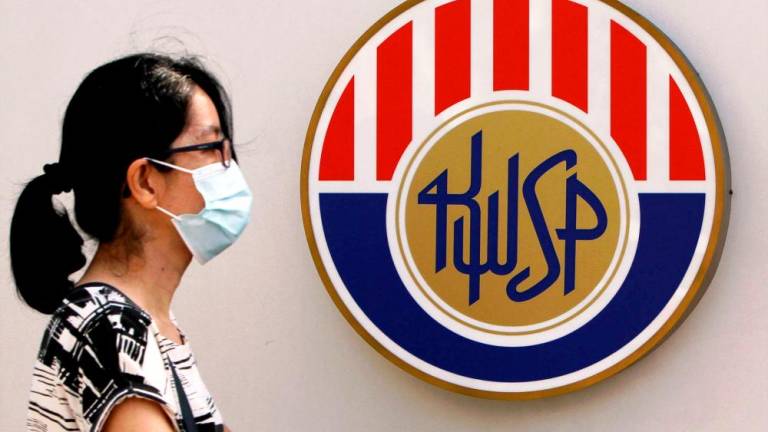PETALING JAYA: The second round of fiscal measures announced by Prime Minister Tan Sri Muhyiddin Yassin last Friday is not expected to lift FBM KLCI company earnings as large corporates are pitching in to combat the impact of Covid-19.
In a note, CGS CIMB Research said it is keeping its end-2020 KLCI target of 1,449 points, for now, pending a review of earnings estimates.
However, Affin Hwang Capital expects the KLCI to bottom at 1,008 points given more market volatility ahead with a likely U-shaped earnings per share recovery.
It opined that the market is downplaying the large economic impact of the Covid-19 virus and overestimating a revival of the economy once activity resumes.
The benchmark index fell 14.21 points or 1.06% to 1,328.88 points yesterday as stimulus joy faded.
CGS CIMB said corporates that are badly impacted by Covid-19 (airlines, casinos, airports, retail, SMEs) will see some relief from the wage subsidy programme and RM50 billion guarantee scheme from Danajamin but this may not be sufficient to offset the revenue losses.
“We see the consumer sector (Nestle, QL Resources Power Root, CCK) as potential beneficiaries, as the direct cash handout of RM10bn and the six-month moratorium on all loan repayments will reduce the negative impact on consumer spending.”
It noted that the key negatives stem from the potential downside of 3% to Tenaga Nasional Bhd’s earnings as it will be funding RM150 million out of the RM532 million additional electricity discounts announced as part of its corporate social responsibility initiative.
The option offered by insurance companies/takaful operators for policyholders to defer payment of insurance premiums for three months, will also likely be short-term negative for Syarikat Takaful earnings as it will not be able to book income on deferred premium for three months.
Last Friday, the government announced a RM250 billion package, of which RM128 billion will be channelled to preserve the people’s welfare, RM100 billion to support businesses, including small and medium enterprises, and RM2 billion to strengthen the economy.
Of the fiscal outlays, RM10 billion will be directed to Bantuan Prihatin cash transfers in April to May while RM1.2 billion in cash assistance is allocated to civil servants and pensioners.
The stimulus could widen the budget deficit to 4.9% of gross domestic product (GDP) versus 3.2% under Budget 2020, which also reflects lower revenues due to revised oil prices and economic assumptions.
However, Finance Minister Tengku Datuk Seri Zafrul Aziz indicated the budget deficit could narrow further to 4% of GDP with revenue enhancements to ensure the government maintains a primary balance, including contributions from GLCs.
UOB Research said it expects economic growth in the first half of the year to be negatively affected with potential spillovers into the third quarter if the situation becomes more protracted.
“We expect Malaysia’s economy to post a full-year contraction of 3.5% in 2020, which marks the sharpest decline since the 1997/98 Asian Financial Crisis when GDP fell 7.4%.”
On the fiscal deficit, UOB said the fiscal deficit could be higher by 2.4% points to 5.6% of GDP in 2020 amid the confluence of lower global oil prices, weaker revenue, and lower nominal GDP.
“In order to achieve a fiscal current account surplus and fiscal deficit of 4% of GDP without any adjustments to the expenditure components, we estimate that this would require additional RM24 billion of revenue enhancements through higher dividends possibly from Petronas, Bank Negara Malaysia, and Khazanah.”
The research house is not ruling out the possibility of further monetary support including cuts in the Overnight Policy Rate and statutory reserve requirement ratio.
Meanwhile, Public Investment Bank Research estimated that for every 10% drop in private consumption, GDP may decrease by 1.8% which begs the need to roll out massive measures to assist private consumption. Its GDP growth forecast has been revised downwards to 2.2%, from 3.8% projected previously.










